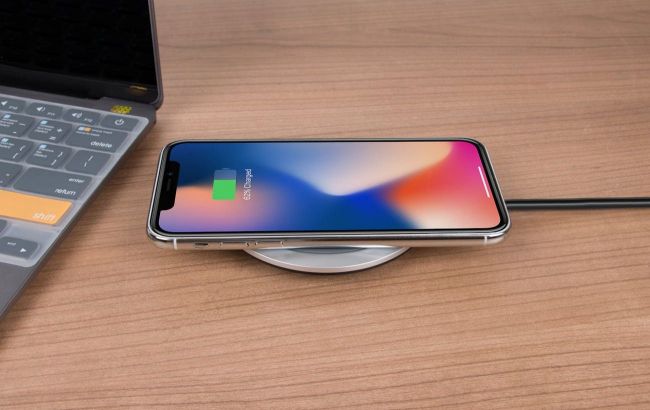10 myths about iPhone charging you should stop believing
 Don't fall for these 10 iPhone charging myths (photo: Pexels)
Don't fall for these 10 iPhone charging myths (photo: Pexels)
Smartphones have become an integral part of our lives, and charging them is a daily routine. But there are still many myths surrounding this process that mislead users, reports MakeUseOf.
Using iPhone while charging is harmful
This is actually more myth than truth, especially for modern smartphones. If your iPhone or any other phone was released in the last ten years, using it while charging won't do any harm.
Of course, charging may slow down as part of the energy is spent on the device, but the difference will be minimal. What you should pay attention to, however, is heat.
Sometimes your iPhone can get quite hot while charging, which can be uncomfortable. Heat is really harmful to the device, but modern Apple phones are equipped with a heat management system that protects them from overheating.

iPhone while charging (photo: MakeUseOf)
Don't leave your iPhone on charge overnight
The lithium-ion battery in your iPhone has a limited lifespan, and it used to be believed that constant overcharging and undercharging accelerated its wear. That's why this myth arose - it used to be true. However, modern iPhones are equipped with smart charging technologies that prevent overcharging.
When your iPhone's charge reaches 100 percent, the device stops charging and only uses the minimum amount of power to keep the battery full.
Additionally, all iPhones with iOS 13 (starting with iPhone 6S) come with Optimized Battery Charging by default. This feature analyzes your usage patterns and postpones charging after 80 percent so your phone spends less time at 100 percent.
The iPhone 15 and later models go even further: they allow you to set the charge limit below 100 percent so that the device never reaches full charge.
Can I charge my iPhone on my bed?
Now that we've established that you can charge your iPhone overnight, we should add that it's definitely not a good idea to do so on your bed. In addition to the small risk of fire (especially if you use faulty cables and chargers), the heat from the mattress accelerates battery wear and tear.
Although it may not seem important, the iPhone really needs good airflow to cool properly. Even with Apple's advanced thermal management system, if the phone can't cool down, heat will build up. If you need to keep your phone close to you while you sleep, it's best to place it on your bedside table rather than hiding it under your mattress, pillow, or body.

Charging an iPhone on a bed (photo: MakeUseOf)
Fast charging has a negative impact on the battery
Theoretically, fast charging does cause more heat, but the negative impact is so slight that it's negligible compared to the benefits. What's more, you can safely fast charge any iPhone, starting with the 8 series. These models are designed for such loads.
Apple has conducted tests to ensure that fast charging is safe. The company has also added mechanisms that protect phones in extreme temperatures. However, it's important to remember that different iPhone models support different charging capacities, depending on the generation of the device.

Fast charging (photo: MakeUseOf)
Charging your iPhone in low power mode damages the battery
Low Power Mode has virtually no effect on the charging process. Of course, it also has no negative impact on the battery.
What's more, this mode can even extend battery life because it causes your iPhone to consume less power.
Don't use a non-Apple charger or power bank
There are many trusted manufacturers certified under the MFi (Made for iPhone) program, such as Anker, Spigen, Mophie, Belkin, and UGREEN. Using their devices with your iPhone is absolutely safe. You don't have to worry about your phone crashing or the charger melting the socket.
In support of this, Apple itself recommends certified third-party chargers and power banks that are sold in the official Apple online store. However, you should avoid cheap fakes and low-quality chargers.

Charging an iPhone in low power mode (photo: MakeUseOf)
Any charger will do, as long as it works
Just because a cheap charger you bought randomly online or on the street works doesn't mean it's safe for your phone.
Poorly made chargers not only harm the battery but can also pose a physical danger through short circuits or fire. Some of them can even damage the iPhone's charging port (this happens more often than you think).
In addition, you may be at risk of data leakage, as unscrupulous manufacturers sometimes embed malware in charging cables.

Don't use a cheap charger (photo: MakeUseOf)
Turning off the iPhone speeds up charging
This myth is based on the assumption that turning off your iPhone uses less power. However, the charging speed depends on many factors, and turning off the phone has virtually no effect on it.
According to tests, the phone charges even slower when it is turned off. This is likely due to the fact that in this mode, the device cannot communicate with the charger via the USB Power Delivery (PD) protocol.
This is why your iPhone automatically turns on when you connect it to a charger.

An iPhone turned off while charging (photo: MakeUseOf)
Wireless charging is bad for the battery
Not necessarily. In fact, wireless charging generates more heat and takes longer to charge your phone. Heat can have a negative impact on the battery, but any standard wireless charger should be able to dissipate heat effectively.
Combined with Apple's superior MagSafe system and its thermal management, wireless charging shouldn't harm your battery.
Just make sure you charge your phone in a well-ventilated area and place it on a surface that doesn't accumulate heat.
You need to completely discharge the battery before charging
This is one of the worst things you can do for battery life. iPhone batteries are typically rated for about 500 cycles. That means they can charge from 0 to 100 percent 500 times before the battery starts to lose capacity.
If you regularly allow your phone to fully discharge before charging, you will exhaust these cycles faster.
It's recommended that you keep your phone charged between 40 and 80 percent and charge it several times throughout the day. It's inconvenient, but it's the best way to keep your battery healthy for longer.
We also wrote about a power bank killer that can charge your phone in seconds.

